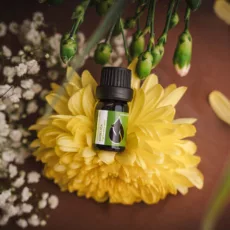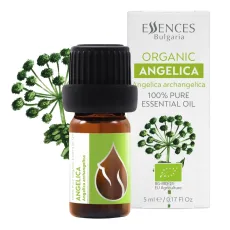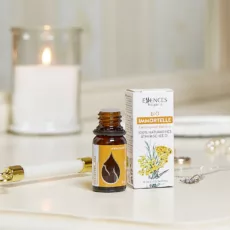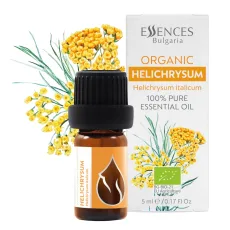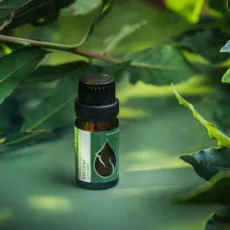Angelica

Angelica (Angelica archangelica), also known as “angel’s herb” and “medicinal pishchyalka,” is a perennial herbaceous plant belonging to the Apiaceae (Umbelliferae) family.
The Latin name derives from the Greek αγγελος (angelos) — “messenger,” and it was named after the Archangel Michael. It is believed that the Archangel Michael appeared in a vision and revealed the plant’s magical powers. The origin of the Bulgarian name is unclear, but it is probably connected with the fact that shepherds make whistles (pishchyalka) from its hollow stems; it may also be related to the plant’s use in various religious and pagan rituals to ward off evil spirits and protect against witches.
Angelica has an ancient significance and an uncertain origin. The herb appears in several legends, one of which is linked to Archangel Michael, who, decades ago, brought this herb to Earth during a plague epidemic. In that period, thanks to it, many lives were saved, and in this way the healing plant received the name “angel’s herb,” which over the years became Angelica. There is another belief that the name “angel’s herb” may have been given because of its appearance — delicate flowers gathered in a complex umbel, resembling a majestic halo.
Among the Scandinavian peoples, angelica was considered a sacred herb endowed with “angelic powers” to combat gastrointestinal problems. A musical instrument resembling a flute is made from its stem. Northern peoples also add it as a flavoring to reindeer milk. Another interesting fact is that its beautiful stems are candied and used for decorative purposes.
In the Middle Ages a liquid extract of angelica was prepared; knights would drop it into their eyes and ears, believing it sharpened vision and hearing. Across North America, Indigenous peoples use many species of angelica as food, medicine, and narcotic plants, as well as for ritual smoking. In Chinese medicine, angelica is considered the “female” equivalent of ginseng because of its ability to harmonize the female organism. It is believed to prolong youth and extend the reproductive period, and to restore the energy flow along the meridians.
Regarded as a panacea for a number of health problems, angel’s herb has been known since ancient times for its estrogenic, digestive, calming, and anti-inflammatory properties.
The plant’s unique root system allows it to store moisture in such a way that angelica can grow a meter in height in just two weeks. An entire line of cosmetics has been created based on angelica root extract. It ensures a higher level of hydration in human cells and thus stimulates the production of elastin and collagen, which are responsible for maintaining the skin’s youthfulness and elasticity.
All parts of angelica — stems, seeds, and roots — are used in cookery and as a medicinal herb. The stems are used in confectionery, while the seeds are added to soups and creams for their pleasant musky aroma. Angelica oil is very expensive and is used in the confectionery, wine-spirits, and tobacco industries, for making digestive bitters, as well as for flavoring liqueurs such as Benedictine, vermouth, Dubonnet, and Chartreuse. Angelica is also used in the distillation of gin and absinthe.
